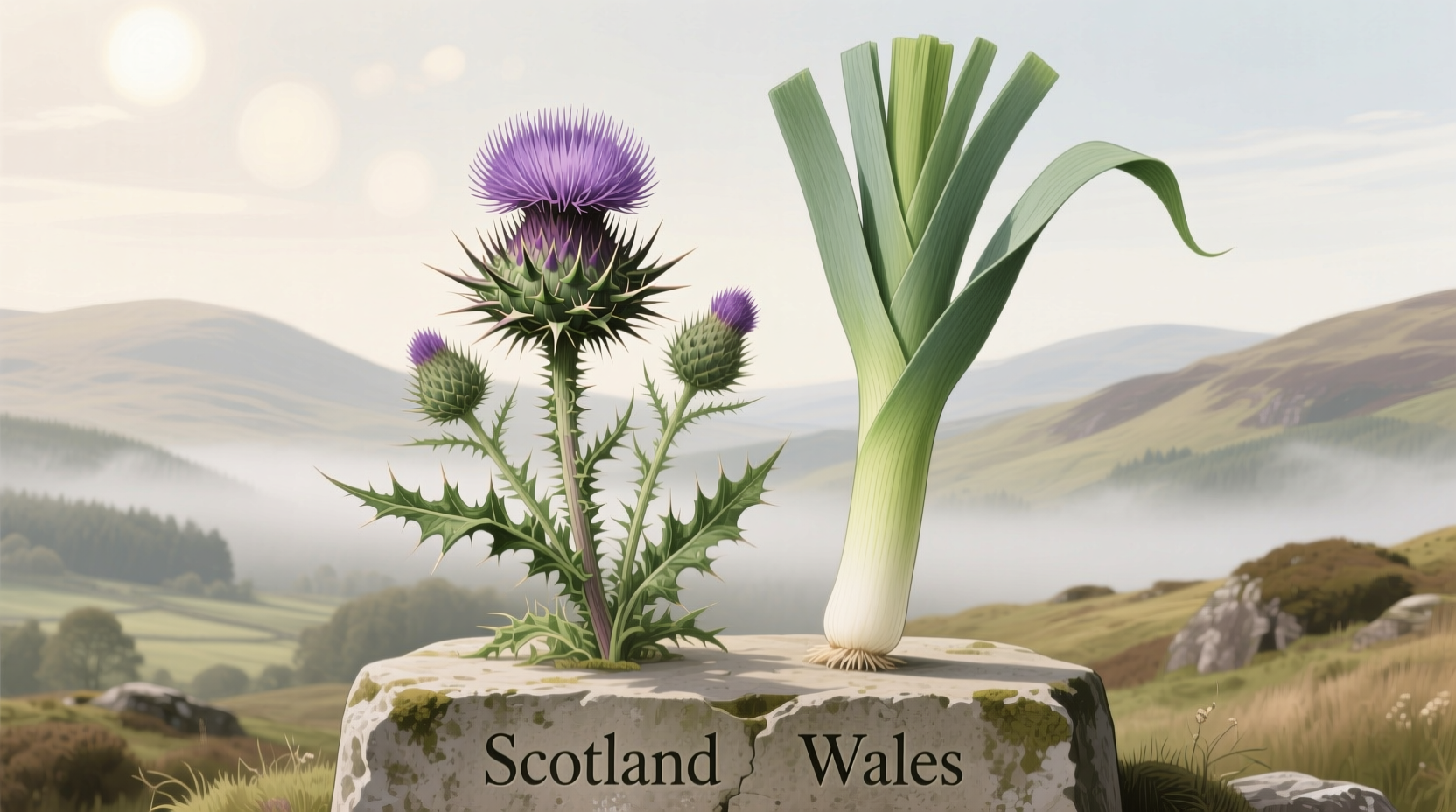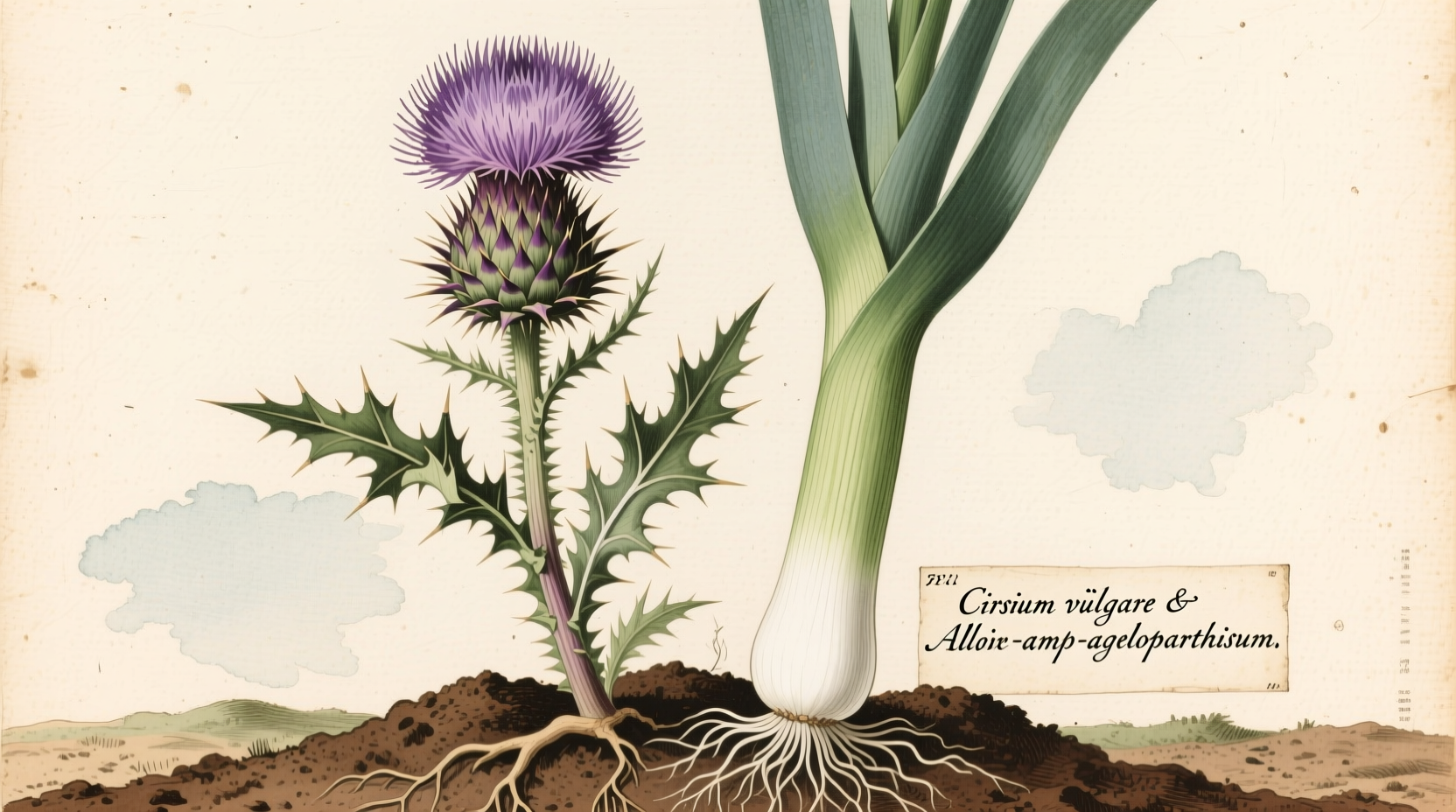Discover why two seemingly ordinary plants became powerful national symbols that continue to shape Scottish and Welsh identity centuries later. This guide reveals the authentic historical narratives behind Scotland's thistle and Wales' leek, separating fact from folklore while showing how these emblems remain vibrant elements of cultural heritage today.
The National Emblem Connection: More Than Just Plants
When searching for "thistle and leek," you're likely exploring the fascinating connection between these plants and the national identities of Scotland and Wales. Unlike common misconceptions, these aren't merely decorative choices but symbols forged through pivotal historical moments that continue to resonate in modern celebrations, sporting events, and cultural expressions.
| Symbol | Nation | Historical Origin | Modern Significance |
|---|---|---|---|
| Thistle | Scotland | 13th century Norse invasion legend | Official national emblem since 1470, featured on coins, honors, and royal insignia |
| Leek | Wales | 6th century St. David's military strategy | Worn on St. David's Day, featured in Welsh military regiments, national celebrations |
Scotland's Thistle: From Battlefield Legend to National Treasure
The thistle's journey as Scotland's national emblem begins with a dramatic historical event. According to the most widely accepted account documented by the National Records of Scotland, during a surprise nighttime attack by Norse invaders in the 13th century, one barefoot Scandinavian warrior stepped on a thistle and cried out in pain, alerting Scottish defenders. This pivotal moment allowed Scotland to repel the invasion.
By 1470, the thistle had gained such prominence that King James III featured it on silver coins. The Order of the Thistle, Scotland's highest chivalric honor, was formally established in 1687. Unlike many national symbols adopted through legislation, the thistle evolved organically through cultural acceptance—a pattern confirmed by Historic Environment Scotland in their analysis of medieval Scottish heraldry.

Wales' Leek: Ancient Roots in Military Strategy and Saintly Wisdom
Wales' connection to the leek spans multiple historical layers. The earliest association comes from St. David, Wales' patron saint (500-544 AD), who reportedly advised Welsh soldiers to wear leeks in their helmets during battle to distinguish themselves from enemies. This practical military strategy evolved into cultural tradition.
A second significant origin story emerges from the Battle of Crécy (1346), where Welsh archers fighting for England wore leeks to identify themselves during the chaotic battle. This event cemented the leek's status as a national symbol, as documented in the National Museum Wales archives. By the 16th century, the leek had become so deeply embedded in Welsh identity that Shakespeare referenced it in Henry V (1599), having Fluellen declare: "I warrant when time is come to fight, that you may carry gently the leek."
Modern Cultural Expressions: Beyond Historical Curiosity
These symbols aren't relics of the past but living elements of national identity. In Scotland, the thistle appears on everything from the Royal Arms to the Scottish Parliament building. During Edinburgh's Hogmanay celebrations, giant thistle motifs illuminate the city. The Welsh leek takes center stage every March 1st (St. David's Day), when people across Wales wear leeks pinned to their clothing—a tradition so significant that the Welsh Guards regiment still includes a leek in their ceremonial uniform.
Understanding the appropriate contexts for these symbols matters. While both nations embrace their emblems, there are cultural boundaries: Scots typically don't wear thistles daily (unlike Welsh leek-wearing on St. David's Day), and neither symbol functions as an official "national flower" in formal botanical terms. The thistle referenced in Scotland's emblem is specifically the cotton thistle (Onopordum acanthium), not the more common Scotch thistle.
Common Misconceptions Clarified
Several persistent myths surround these national symbols. Contrary to popular belief, the thistle isn't Scotland's national flower (Scotland has no official national flower), and the leek isn't Wales' only national symbol (the daffodil shares this status). Neither plant features prominently in traditional cuisine as ingredients—this is purely symbolic, not culinary. The idea that Scottish warriors adopted the thistle immediately after the Norse incident is also inaccurate; historical records show the symbol gained prominence gradually over centuries.
Experiencing These Symbols Authentically
To truly understand Scotland's thistle and Wales' leek, consider these practical experiences:
- Visit Edinburgh Castle during August to see the thistle featured in the Royal Edinburgh Military Tattoo
- Attend a St. David's Day service in Cardiff where the leek's significance is explained in Welsh tradition
- Explore the National Museum of Scotland's heraldry collection showcasing thistle evolution in Scottish iconography
- Join a guided historical walk in St. David's, Pembrokeshire, where the saint's leek strategy is contextualized
When engaging with these symbols, remember they represent deep cultural pride. Wearing a leek on March 1st in Wales shows respect for local tradition, while understanding the thistle's significance enhances appreciation of Scottish heritage beyond superficial stereotypes.











 浙公网安备
33010002000092号
浙公网安备
33010002000092号 浙B2-20120091-4
浙B2-20120091-4